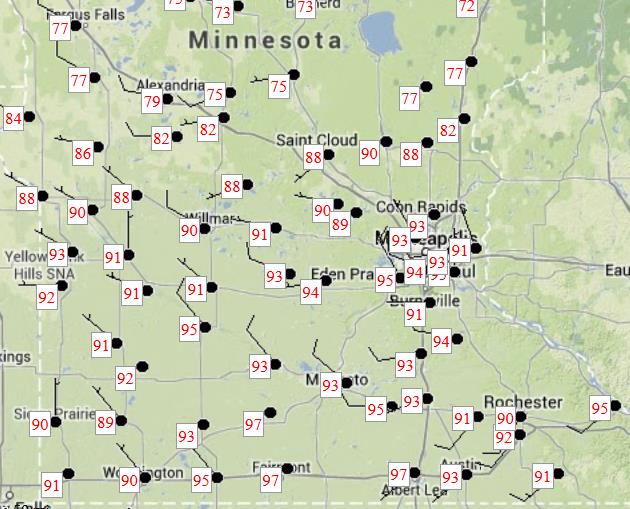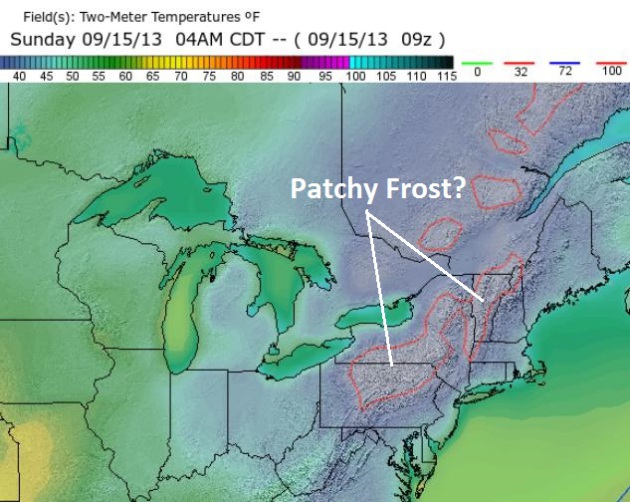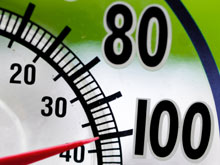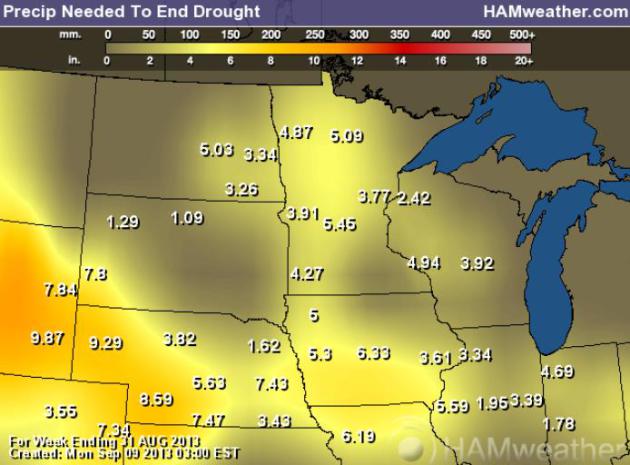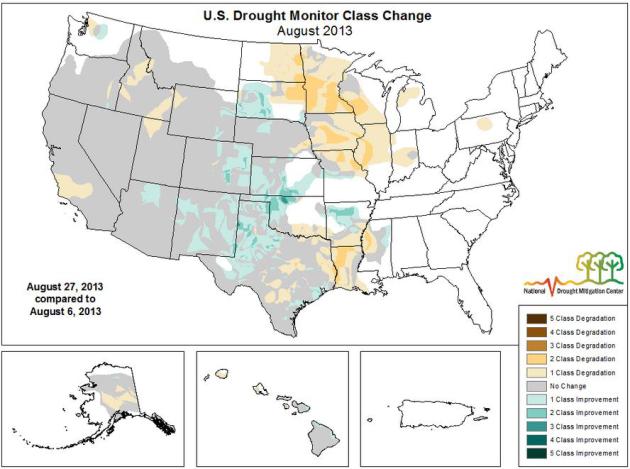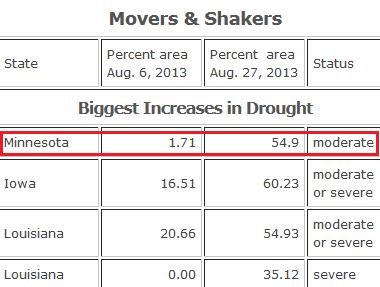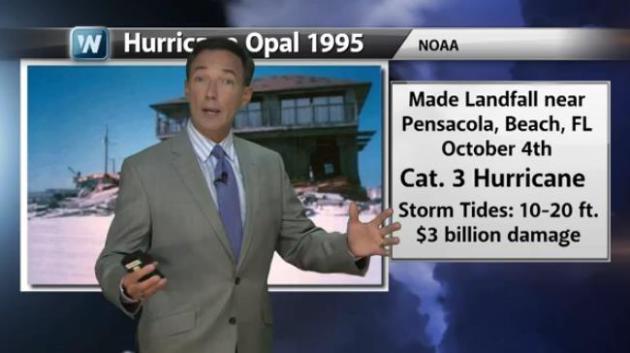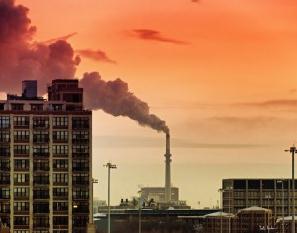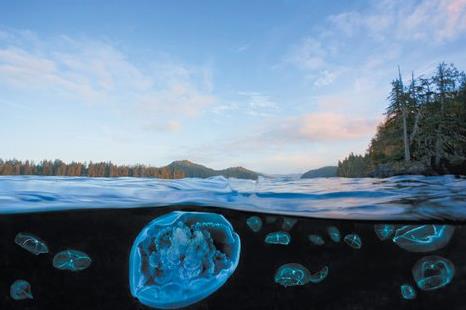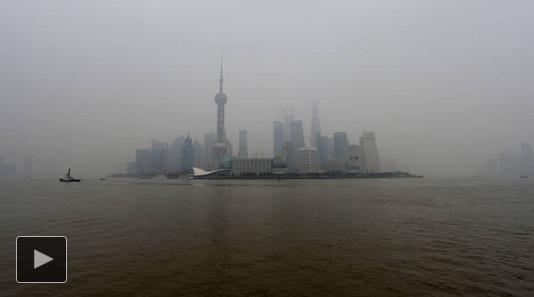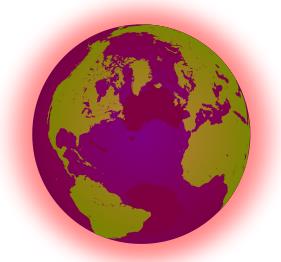Exhibit A
A
long range weather forecast is more of a horoscope than a credible
prediction to be taken seriously. The skill just isn't there yet.
Case
in point: in the spring I predicted summer would be a bit cooler &
stormier than average. Hit the buzzer Paul - you don't even get the
parting gifts. I thought the cool, wet bias obvious in April might
linger into much of summer, but Mother Nature had other plans.
National
Weather Service cooling degree data shows we've spent 28 percent more
than average cooling our homes since June 1. And severe storms? SPC data
shows only 9 tornadoes this year in Minnesota, well below average.
Remind
me to stick to the 7-Day, which is challenging enough. Moral of the
story: take any winter outlooks with a boulder-size grain of salt.
Weather is chaos, and a 6-month prediction is a joke.
We cool off
into the 80s today, but by the end of the week there will be no doubt in
your mind that it's September: dew points in the 40s, a risk of a light
jacket at the bus stop by Friday morning? The best chance of rain? Next
Sunday. But we may have to wait until October to get the moisture we
need to replenish dusty topsoil.
Minnesota's drought will probably get worse before it gets better.
Hope I'm wrong about that one too.
Monday Highs.
Yesterday looked and felt more like July 10 than September 10, with
temperatures 20F warmer than average over much of the southern half of
Minnesota. Fairmont and Albert Lea registered 97F, with mid 90s reported
over much of the MSP metro area, 88 at St. Cloud. Map:
MesoWest.
Spasms Of Summer.
Temperatures continue to trend well above average into Wednesday, then
cool to more September-like levels by the end of the week as dew points
sink into the 30s. The ECMWF (European) model tries to bring some rain
into much of Minnesota late Saturday into Sunday and early Monday (highs
holding in the 60s), followed by a significant warm-up by the middle of
next week. Graph: Weatherspark.com.
An Early Autumn For New England.
Here is the GFS forecast for early morning temperatures on Sunday
morning, hinting at a frost from near Williamsport, PA to Elmira and
Burlington, Vermont. Time to dig out the heavy jackets in the Northeast.
Map above: Ham Weather.
Latest 100 Degree High In the Twin Cities? September 10, 1941 (104 F).
Rainfall Needed To End The Drought.
Recent rains have helped northern counties of Minnesota, but 4-6" of
rain is needed to take the edge off the drought across most of central
and southern Minnesota. Map: NOAA and Ham Weather.
National Moisture Needs.
Widening out for a USA (conus) view you can see that the drought over
the Upper Midwest is relatively mild, compared to a growing moisture
deficit over the western Hiigh Plains, Rocky Mountains and much of the
western USA. The greatest rainfall deficit: Texas into western Nebraska,
Wyoming and Montana.
August 2013 Drought And Impact Summary. Here's an excerpt from the latest update from the
National Drought Mitigation Center: "
The
portion of the country in moderate drought or worse expanded rapidly in
late August due to heat. “Flash drought” in the Upper Midwest increased
the total area of the contiguous United States in moderate to
exceptional drought (D1-D4) on the U.S. Drought Monitor to 50.34
percent, which is the greatest area since April 9, when it was slightly
higher, at 50.82 percent...."
Lessons From The Deadly 1900 Galveston Hurricane - Opal In 1995 Was Another Close Call.
Unless Humberto becomes a hurricane by Wednesday we'll set a record for
the latest (first) hurricane on record in the Atlantic - but that
doesn't mean the rest of the season will necessarily be a dud. Today's
Climate Matters
includes the lessons of the Galveston Hurricane of 1900, and the
difficulty of evacuating coastal areas quickly in a worst-case scenario,
like Opal in 1995: "
WeatherNationTV Chief Meteorologist Paul
Douglas goes over some of the monster hurricanes that formed in the
later half of the hurricane season. Could we see another devastating
storm like Galveston in 1900?"
"Fire Vortex".
Matt Granz snapped this remarkable photo of the "Morgan Fire",
northeast of San Francisco - a rapidly rising vortex of fire and ash
with a structure similar to a tornado (without the parent mesocyclone,
of course). Image courtesy of Twitter and the
Sacramento National Weather Service.
* more details on the 800-acre Morgan Fire from
NBC News.
Trees Write Air Pollution Record In Wood. Here's a clip from an interesting story at
Scientific American: "
The red cedar trees of Grant County, West Virginia can tell a fascinating tale. Because locked inside them is the history of U.S. air pollution
in the 20th century. Researchers began pulling cores from five randomly
selected red cedar trees in 2008. The ratio of heavy and light isotopes of carbon
found in the tree rings told them many secrets about the trees and
their environment. From the 1940s through the 1970s, the trees closed
the tiny holes in their leaves known as stomata to protect themselves
from acid rain...."
South Beach Sunrise. Thanks to the
Miami office of the National Weather Service for posting this one. Very nice.
Bermuda Triangle Earthquake Triggered 1817 Tsunami.
A 7.4 magnitude earthquake in the Bermuda Triangle capable of
generating a huge tidal wave all up and down the East Coast? Here's a
clip from an interesting story at
LiveScience: "
A
"tidal wave" violently tossed ships docked along the Delaware River
south of Philadelphia at about 11 a.m. ET on Jan. 8, 1817, according to
newspapers of the time. Turns out, that tidal wave was actually a
tsunami, launched by a powerful magnitude-7.4 earthquake that struck at
approximately 4:30 a.m. ET near the northern tip of the Bermuda
Triangle, a new study finds. The study links the tsunami to a known Jan.
8, 1817, earthquake.
The temblor shook the East Coast from Virginia south to Georgia, where
the seismic waves made the State House bell ring several times..."
Map credit above: "A
model predicted the tsunami wave height from a Jan. 8, 1817, earthquake
offshore South Carolina. The earthquake's magnitude was estimated at
7.4 from newspaper accounts. Credit: USGS.
How Green Is A Tesla, Really? Here's a clip from an interesting story at
Slate: "...
A
Model S can travel upwards of 265 miles on a single charge of its 85
kilowatt-hour battery, which equates to less than 3 gallons of gas. Its
official EPA miles-per-gallon equivalent is 89, far greater than a standard Toyota Prius.
For any given Model S, though, the emissions-per-mile depend heavily on
the mix of energy sources that go into your local grid. According to Tesla’s own emissions calculator, if you’re driving your Model S in West Virginia—where the power mix is 96 percent coal—you’re spewing some 27 pounds of CO2
in a typical 40-mile day, which is comparable to the amount you’d emit
in a conventional Honda Accord. Indiana, Kentucky, and Ohio aren’t much
better. On the other hand, if you’re charging your Tesla in California,
where natural gas supplies more than half the electricity—or, better
yet, Idaho or Washington, where hydroelectricity reigns—your per-mile
emissions are a fraction of that amount. Congratulations: Your Model S
is a clean machine after all..."
They're Taking Over!
This is why I have an even greater appreciation for Minnesota's lakes -
clean water, and jellyfish-free. Here's a clip from a story at
The New York Review of Books: "...
Then
the Gulf experienced Hurricane Katrina and the oil spill of 2010. Fish
and prawn numbers plummeted, but the Australian spotted jellyfish kept
going from strength to strength. By 2011 it had shown up in the western
Mediterranean, and more than ten people a day were being stung, forcing
the closure of tourist beaches at the height of the season. It’s
recently been spotted off Israel and Brazil. From the Arctic to the
equator and on to the Antarctic, jellyfish plagues (or blooms, as
they’re technically known) are on the increase. Even sober scientists
are now talking of the jellification of the oceans. And the term is more
than a mere turn of phrase. Off southern Africa, jellyfish have become
so abundant that they have formed a sort of curtain of death, “a
stingy-slimy killing field,” as Gershwin puts it, that covers over
30,000 square miles..."
Image credit above: David Hall. "A
moon jellyfish and cross jellyfish floating in a remote channel near
Victoria Island, British Columbia; photograph by David Hall from Beneath
Cold Seas: The Underwater Wilderness of the Pacific Northwest, which
collects his images of marine life in that region. It is published by
University of Washington Press."
The 10 Greatest Films Of All Time, According To 846 Film Critics. Where is "The Lone Ranger" on this list? Great question. Here's a video and article excerpt from
Open Culture: "
We’ve recently featured the all-time-greatest-film-selections from such celebrated directors as Stanley Kubrick, Martin Scorsese, Woody Allen, and Quentin Tarantino. Some of these lists came from the grand poll put on last year by Sight & Sound,
the British Film Institute’s well-respected cinema journal. While
scrutinizing the voting records in the directors’ division yields no
small pleasure for the cinephile, to focus too closely on that would
ignore the big picture. By that, I mean the overall standings in this most painstaking critical effort to determine “the Greatest Films of All Time”:
- Vertigo (Alfred Hitchcock, 1958)
- Citizen Kane (Orson Welles, 1941)
- Tokyo Story (Yasujirô Ozu, 1953).......
Climate Stories...
A Silent Hurricane Season Adds Fuel To A Debate Over Global Warming? If
water temperatures are, in fact, warming, why haven't we seen more
hurricane activity in 2013, and why haven't hasn't the USA been hit by a
Category 3+ hurricane in 8 years? Here's an excerpt of an explanation
from
Time Magazine: "...
Still,
the lack of activity in the first half of the storm season demands
explanation. The abundance of warmer, drier air across the Atlantic this
summer has made the atmosphere more stable, discouraging the
development of strong storms. There’s also a lot of wind shear, when
wind at different altitudes occur in different speeds and directions,
which tends to snuff out new tropical storms. It’s also possible that
dust from North Africa,
which can reduce the temperature of the sea surface, may be stalling
storms. (Hurricanes are fed by warm ocean waters, which is why they form
in the tropics.) The truth is that scientists aren’t really sure why
there hasn’t been a hurricane yet this season, nor do they know why an
intense hurricane — Category 3, 4, 5 — hasn’t made landfall in the U.S.
since Wilma all the way back in 2005..."
A Climate Alarm, Too Muted For Some. Will the next IPCC Climate Update err on the side of ultra-conservative projections of temperature and sea level rise?
The New York Time's
Justin Gillis has a video clip and article; here's an excerpt: "This
month, the world will get a new report from a United Nations panel about
the science of climate change. Scientists will soon meet in Stockholm
to put the finishing touches on the document, and behind the scenes, two
big fights are brewing. In one case, we have a lot of mainstream
science that says if human society keeps burning fossil fuels with
abandon, considerable land ice could melt and the ocean could rise as
much as three feet by the year 2100. We have some outlier science that
says the problem could be quite a bit worse than that, with a maximum
rise exceeding five feet. The drafters of the report went with the lower
numbers, choosing to treat the outlier science as not very credible..."
Video clip credit above: "Human Hands in a Changing Climate:
The Times's Justin Gillis talks about what the Intergovernmental Panel
on Climate Change will release in their report later this month."
Arctic Sea Ice Delusions Strike The Mail On Sunday And Telegraph. Here's an excerpt of a story at
The Guardian: "...
The
amount of Arctic sea ice left at the end of the annual melt season is
mainly determined by two factors – natural variability (weather patterns
and ocean cycles), and human-caused global warming. The Arctic has lost 75 percent of its summer sea ice volume
over the past three decades primarily due to human-caused global
warming, but in any given year the weather can act to either preserve
more or melt more sea ice. Last year the weather helped melt more ice,
while this year the weather helped preserve more ice. Last year I created an animated graphic
called the 'Arctic Escalator' that predicted the behavior we're now
seeing from the Mail on Sunday and Telegraph. Every year when the
weather acts to preserve more ice than the previous year, we can rely on
climate contrarians to claim that Arctic sea ice is "rebounding" or
"recovering" and there's nothing to worry about. Given the likelihood
that 2013 would not break the 2012 record, I anticipated that climate
contrarians would claim this year as yet another "recovery" year,
exactly as the Mail on Sunday and Telegraph have done...."
Science Showing Climate Change Is Man-Made.
How much of the warming is natural vs. man made? Scientists can track
specific isotopes of CO2, separating out natural from man-made
(pollution) sources that arise from the burning of fossil fuels. More
details in this excerpt from a story at the
Appleton Post-Crescent: "...
From
studying air bubbles trapped in Antarctic ice, scientists know that
going back 800,000 years, the carbon dioxide level oscillated in a tight
band, from about 180 parts per million in the depths of ice ages to
about 280 during the warm periods between. A process called isotopic
analysis allows the reconstruction of local temperature records and the
history of atmospheric composition.This history shows that global
temperatures and CO2 levels are tightly linked. Significantly, isotopic
analysis can distinguish between isotopic variants of the carbon atom
that are, in effect, the fingerprint of the source of the carbon (and
hence CO2). These isotopic variants can distinguish between carbon that
is the product of the burning of fossil fuels and carbon from other
natural sources. It’s no accident that the beginning of the industrial
revolution can be noted in the analysis of carbon isotopes in ice cores..."
Teaching Climate Change To Skeptics.
I tell audiences the truth: you SHOULD be skeptical, about everything.
Scientists are skeptical. But skepticism is different than perpetual
cynicism, in the face of overwhelming evidence. Here's an excerpt from a
story at
Forbes: "...“
The issue has become totally intertwined with political ideology,” says Richard H.K. Vietor,
the Paul Whiton Chertington Professor of Business Administration at
HBS, who has been studying government and energy for more than four
decades. “There are many people who believe the government is doing too
much, and that the government interferes with economic growth if it
enacts and implements policies around climate change; therefore, they
choose not to believe in climate change....
It’s striking that
anyone frames this question in terms of ‘belief,’ saying things like, ‘I
don’t believe in climate change,’ ” says John D. Black Professor and
BEI faculty cochair Forest L. Reinhardt.
“I don’t think this ought to be treated as a religious question. I
think it’s better seen as a classic managerial question about
decision-making under uncertainty...”
Coping With Climate Change.
The number of climate denialists are dwindling in South Florida, where
sea level has risen 9" since the 1920s. In Miami it's not a theory, but a
reality you can see outside your floor to ceiling condo window. What's
happening in Greenland may provide more clues about the rate of sea
level rise and implications for much of Florida, as described in this
excerpt at
The Miami Herald: "....
This
is a snapshot of climate change. The melting is taking place thousands
of miles away, but its effects can be felt in South Florida in the form
of rising sea levels. According to recent studies, the sea level has
risen nine inches since the 1920s and if the sea-rise trend continues to
accelerate — as some predict — parts of the state could eventually be
submerged under water. As cities like Miami, New York and other
vulnerable spots strategize about how to respond to climate change,
researchers from the National Science Foundation, universities and
global organizations flock to Greenland in search of answers. “There
isn’t really a debate as to whether or not global climate change is a
thing. What the issue is, is what is causing it?,” said Carli Arendt, a
Phd student at the University of Michigan’s Glario Chemistry and Isotope
Geochemistry Laboratory (GIGL), who was in Greenland earlier this
summer to collect water samples. “We’re just trying to, strictly for the
science, figure out how things are melting and at the rate that they’re
melting at...” (Image above: NASA).
America's Solar Revolution Is Twisting The Utility Industry Into Knots.
Do you have solar panels on your roof yet? Chances are you will at some
point in the next 5-10 years. Here's a snippet of a story from
Business Insider: "...
At the same time, utilities are also recognizing that any kind of curb in renewable use is just a stopgap.
Long term, they're probably in trouble.
Here's the New York Times' Diane Cardwell quoting Clark Gellings
of the Electric Power Research Institute, a utility industry
association: "We did not get in front of this disruption...It may be too
late."And earlier this year, Bloomberg's Chris Martin and Noreen S.
Malik quoted the CEO of Duke Energy, the largest utility owner in the
country, that solar was truly disruptive.
"It is obviously a potential threat to us over the long term,” said Jim
Rogers, chairman and chief executive officer of Duke Energy Corp.
(DUK), the largest U.S. utility owner..."

